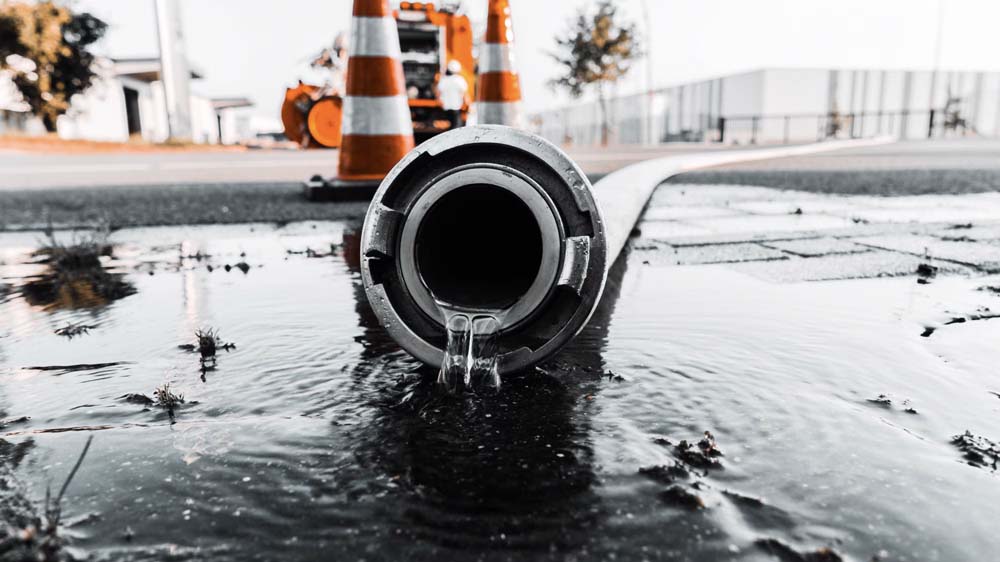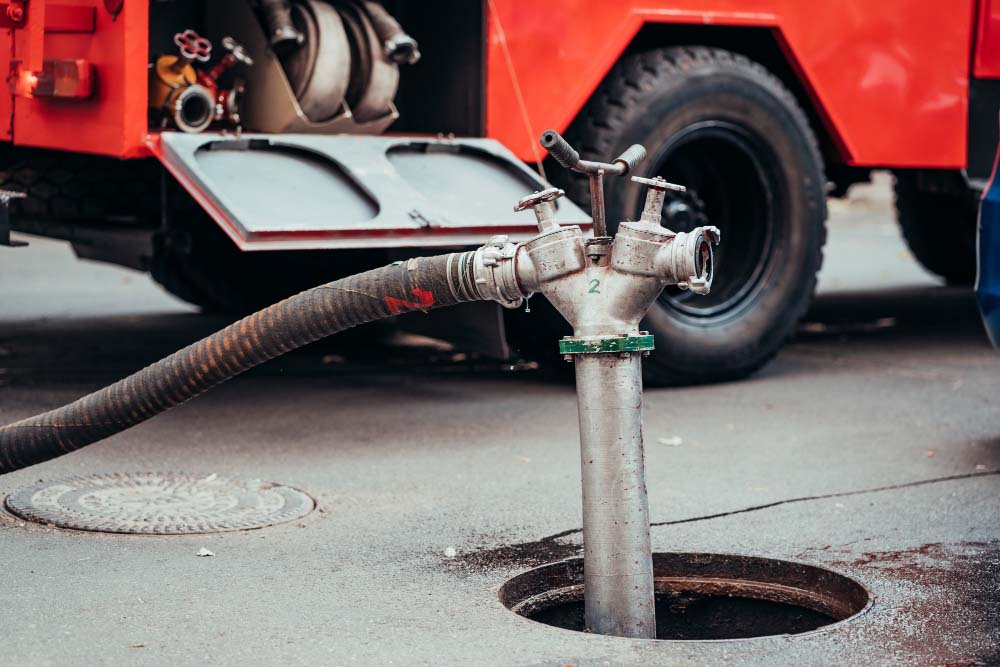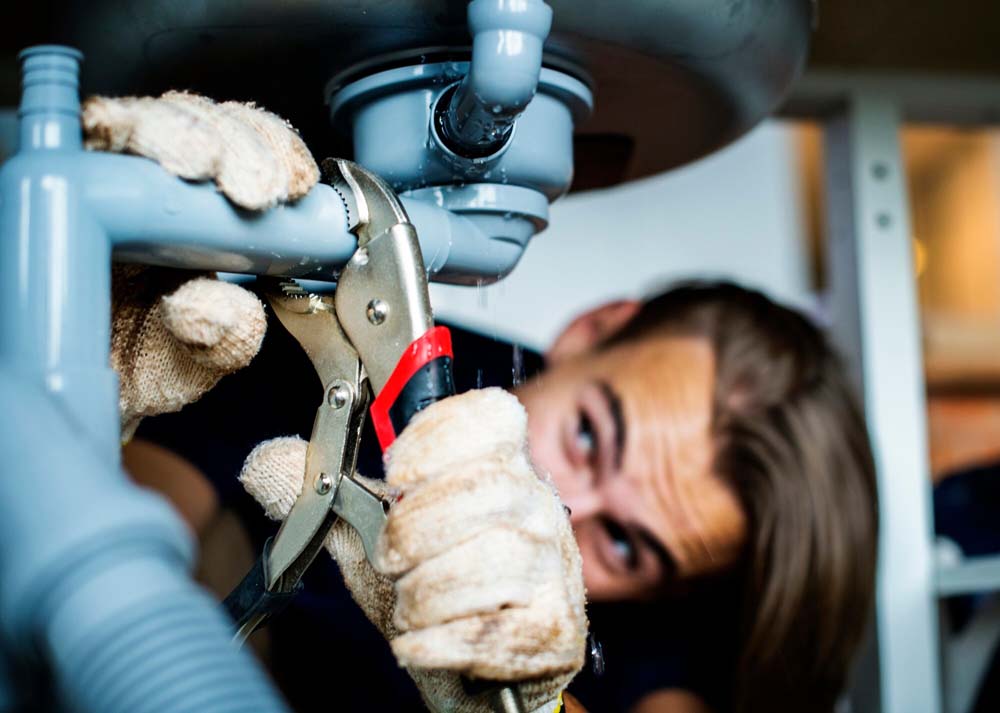A sump pump is essential for homeowners prone to basement flooding or living in areas with high water tables. It actively pumps out water that accumulates in a sump basin to prevent water damage and protect the structural integrity of your home. Hiring a professional installer is wise, considering the complexities of selecting and installing the right sump pump. Professional sump pump installation costs vary, but you should anticipate spending around $1,200 for a standard setup. A sump pump installer ensures proper installation and maximizes your system’s efficiency and longevity.
Table of Contents
Introduction
Key Takeaways
Why You Need a Sump Pump in Your Home
5 Reasons to Hire a Professional Sump Pump Installer
Frequently Asked Questions
Key Takeaways
- Professional sump pump installers assess home-specific factors like layout and local rainfall to recommend the most suitable sump pump model and type for optimal performance.
- Correct installation by a professional prevents common DIY errors, ensuring the sump pump operates efficiently and lasts longer.
- Professionals use advanced tools and techniques that ensure safe and efficient sump pump installation beyond the reach of typical DIY methods.
- A professional sump pump installer knows local building codes and regulations, ensuring the installation complies with legal standards and avoids fines.
- Hiring a professional provides warranties on parts and labor, reducing the financial risk of future malfunctions and offering ongoing support for maintenance and repairs.
Why You Need a Sump Pump in Your Home
Water damage is a homeowner’s nightmare, leading to costly repairs, long-term structural issues, and health risks from mold. This threat is even more pronounced in areas with heavy rainfall or high groundwater levels. This is where a sump pump comes into play. Acting as a safeguard, a sump pump is designed to efficiently manage water levels in your home, particularly in lower-lying areas like basements. Its role is crucial for preventing the disastrous effects of water accumulation. Whether you’re combating seasonal rains or unexpected leaks, understanding the importance of a sump pump can help you take proactive steps to protect your home.
Water Damage Emergencies
According to statistics, approximately 14,000 people in the US experience water damage emergencies at home or work each day. This underscores the commonality and risk of water damage. Water damage can occur for several reasons, such as flooding caused by heavy rains, burst pipes, or other water system failures. This makes it a prevalent issue that requires preventative measures.
Preventing Flooding
The primary function of a sump pump is to prevent flooding, which is especially important in areas prone to heavy rainfall or homes with high groundwater levels. By actively managing water levels, the sump pump reduces the risk of water overflowing and flooding your living space, mitigating potential damage to flooring, walls, furniture, and electrical systems.
Staving Off Mold Growth
Sump pumps play a crucial role in preventing mold and mildew growth by keeping your basement dry. Mold thrives in moist environments, and its presence can lead to significant health issues, particularly respiratory problems, allergies, and worsening of asthma symptoms. A dry environment, maintained by an efficient sump pump, helps prevent the conditions that allow mold to grow.
Maintaining the Foundation
Accumulated moisture can be disastrous for the structural integrity of your home. Over time, water can erode concrete and weaken the foundations, leading to cracks and even structural failure. Maintaining a dry basement helps ensure the longevity and safety of your home’s structural elements.
5 Reasons to Hire a Professional Sump Pump Installer
Given the technical considerations involved in choosing and installing the right sump pump—like pump capacity, head pressure, type of pump (submersible vs. pedestal), and correct installation techniques—it is advised to consult a professional sump pump installer. A professional can assess your specific situation based on the layout of your home, local climate conditions, and soil type and recommend a sump pump system tailored to your needs. This ensures effective water management and long-term protection for your home.
1. Expert Assessment and Custom Recommendations
Selecting the correct sump pump for your home isn’t just about picking a model off the shelf; it requires a thorough understanding of your home’s unique environmental and structural characteristics. A professional sump pump installer plays a crucial role in this process, offering expert assessments and tailored recommendations that ensure optimal performance and efficiency of your system.
Evaluating Your Home’s Layout and Environmental Factors
A professional sump pump installer begins by assessing several key aspects of your home and its surroundings:
- Home’s Layout: This includes understanding where water is most likely to accumulate and identifying the lowest point in the basement or crawl space where a sump pit can be strategically placed. The layout assessment also considers the best route for piping to divert the water away from your home effectively.
- Surrounding Land’s Slope: The property’s gradient or slope affects how water naturally flows around and away from your house. A professional sump pump installer will consider this to ensure that the sump pump’s discharge location and the water’s flow path do not lead water back toward the foundation.
- Local Rainfall Data: Understanding the typical rainfall patterns and intensity in your area helps in sizing the pump correctly. Regions with higher average rainfall may require a sump pump with a higher capacity to handle the increased volume of water.
Choosing the Right Sump Pump
After the initial assessment, the installer will guide you through selecting the most appropriate sump pump. Here are the factors considered:
- Type of Sump Pump
- Submersible Pumps: These are installed inside the sump pit and are designed to be water-proof. They are quieter and generally more powerful, making them suitable for homes that experience frequent or high volumes of water accumulation.
- Pedestal Pumps: A motor is mounted above the sump, keeping it dry. They are easier to maintain because the motor is accessible, but they are noisier and generally less potent than submersible pumps.
- Pump Capacity
This is the rate at which the pump can remove water, measured in gallons per minute or gallons per hour. The installer will recommend a capacity to handle your area’s highest expected water influx during heavy rainfall or rapid snowmelt.
- Head Pressure
This refers to the pump’s ability to lift water to a certain height. The installer calculates the pump’s vertical distance to move water from the sump pit to the discharge point, plus any additional resistance from long horizontal runs or bends in the discharge pipe.
- Switch Type
The switch activates the pump when the water in the sump pit reaches a certain level. Common types include tethered floats, vertical floats, and electronic switches. Each has different advantages and space requirements, influencing the choice based on the size and shape of your sump pit.
2. Proper Installation Ensures Longevity
Installing a sump pump is not merely placing it in a basement and connecting it to a power source; it involves a series of precise steps and considerations that ensure the system operates effectively for years. A professional sump pump installer brings expertise and attention to detail, which is critical for avoiding common installation errors that could lead to costly malfunctions.
Importance of Professional Installation
A professional sump pump installer ensures that every aspect of the installation is handled correctly, which is essential for the following reasons:
- Avoiding Installation Errors: Common mistakes in DIY installations include improper sealing, incorrect pump placement, and faulty pipe connections. These errors can compromise the sump pump’s ability to operate efficiently and may even result in water backing up and flooding your basement.
- Ensuring Durable Performance: Proper installation affects the sump pump’s ability to withstand wear and tear over time. For instance, ensuring that the pump is correctly seated in the sump basin and that all connections are tight and secure can prevent vibration damage and leaks.
- Adherence to Manufacturer Guidelines: Each sump pump model comes with specific installation instructions from the manufacturer. These guidelines are designed to optimize the pump’s performance and longevity. A professional installer is familiar with these instructions and can implement them accurately. This adherence to guidelines ensures that the pump operates within its designed parameters, which reduces the risk of malfunction and premature failure.
Impact on Longevity and Efficiency
Improper installation can lead to several issues that directly impact the efficiency and lifespan of a sump pump:
- Reduced Efficiency: Installation errors can decrease a sump pump’s efficiency. This reduction in efficiency means the pump must work harder and longer to remove the same amount of water, leading to increased wear and higher energy costs.
- Increased Wear and Tear: Incorrect installation can cause the pump to operate under strain, for example, if the discharge pipe is not correctly aligned or the check valve is installed backward. This strain can accelerate the wear on the pump’s components, leading to more frequent breakdowns and replacements.
- Risk of Flooding: The most immediate and severe consequence of a poorly installed sump pump is the risk of flooding. A pump that fails during a heavy rainstorm can result in significant water damage, which can be costly to repair and lead to secondary issues like mold growth.

3. Access to the Right Tools and Techniques
The necessity of using the proper tools and techniques when installing a sump pump cannot be overstated. Professional sump pump installers bring their expertise and a suite of specialized tools that enable them to complete installations efficiently and safely.
Specialized Tools for Professional Installation
Professional sump pump installers are equipped with various specialized tools to perform the installation correctly and effectively. These tools include:
- Hammer Drills and Concrete Saws: Installing a sump pump often requires cutting through concrete to create a sump pit. This task requires powerful tools like hammer drills and concrete saws, which can efficiently penetrate basement floors without causing structural damage.
- High-Powered Vacuums: Debris and dust must be removed after cutting through concrete. High-powered vacuums clean the area thoroughly, which is crucial for preparing the space for the sump pump and ensuring that no debris hampers its operation.
- Plumbing Tools: Professional installers use various plumbing tools to ensure the discharge pipes are securely fitted. This might include pipe wrenches, PVC cutters, and crimping tools, which help ensure tight and leak-free connections.
- Electrical Tools: Since sump pumps are powered devices, proper electrical installation is crucial. Installers use wire strippers, voltage testers, and more to ensure all electrical connections are safe and meet local electrical codes.
Safety Standards and Techniques
The expertise of professional sump pump installers extends beyond just using the right tools; it also involves following the latest safety standards and techniques to prevent potential hazards:
- Electrical Safety: Dealing with electricity, especially in damp environments like basements, poses significant risks. Professional installers are trained to handle electrical components safely, ensuring all wiring is properly insulated and secured to avoid shocks and short circuits.
- Water Hazard Management: Installers are also skilled in managing water flow during installation. They ensure that the sump pump’s placement and the routing of discharge pipes minimize the risk of water backflow, which can lead to flooding.
- Adherence to Building Codes: Professionals ensure that the installation adheres to local building codes, which include specifications for the sump pump’s size, type, and installation methods. Compliance with these codes ensures safety and guarantees the installation is legally sound.
4. Compliance with Local Building Codes and Regulations
Local building codes are established to ensure that all construction and installation work meets safety, health, and environmental standards. These codes can be quite complex and vary significantly from one locality to another, often including detailed requirements for installing sump pumps. Adhering to these regulations is not just about legal compliance; it’s about ensuring the safety and efficiency of the installation.
This is where the expertise of a licensed sump pump installer becomes invaluable. A licensed sump pump installer brings a deep understanding of regional codes that govern the installation of sump pumps. Here’s how they navigate these requirements:
- Knowledge of Local Codes: Professional installers are trained and updated on local building codes for sump pumps. This includes details such as how deep the sump pit must be, where it can be located, and how water can be legally discharged.
- Proper Discharge Placement: Many localities have strict regulations about where water from a sump pump can be discharged. This is crucial to prevent flooding of the property or neighboring areas. A professional installer knows how to configure discharge lines to comply with these rules, ensuring that water is routed away from the building and neighboring properties in an approved manner.
- Installation of Backup Systems: In some regions, building codes require that sump pump installations include a backup system to prevent failures during power outages, often when the sump pump is needed most. A professional installer can recommend and install the appropriate backup system — whether a battery backup or a water-powered backup pump — complying with local requirements.
Avoiding Legal Issues and Fines
By ensuring that every aspect of the sump pump installation adheres to local building codes, a professional installer helps homeowners avoid potential legal problems, such as fines or mandated corrective measures. This compliance is about avoiding penalties and ensuring the installation is safe and effective, providing peace of mind to the homeowner.
5. Warranty and Future Support
Installing a sump pump is a significant investment in your home’s safety and integrity. Beyond the initial installation, the ongoing reliability of your sump pump system is paramount.
Importance of Warranties
Warranties are crucial in ensuring the quality and reliability of products and services. They provide consumers with protection and assurance, offering coverage for potential issues arising after purchase or installation.
- Coverage of Parts and Labor: Most professional sump pump installers offer a warranty covering parts and labor. If your sump pump fails due to a manufacturing defect or an installation error, the repairs or replacement parts will be provided at no additional cost. This warranty is important because it mitigates the financial risk involved in the event of a malfunction.
- Peace of Mind: The assurance that comes with a warranty cannot be overstated. Knowing that any issues with your sump pump can be addressed without incurring further costs provides significant peace of mind. Homeowners can feel secure that their investment is protected and that their home is safeguarded against water damage.
Ongoing Support for Maintenance and Repairs
Ongoing support for maintenance and repairs is vital for ensuring the long-term health and efficiency of your sump pump. Access to expert advice can help you optimize your sump pump’s performance and promptly address any issues.
- Long-Term Equipment Health: Regular maintenance ensures that a sump pump continues operating efficiently and effectively. Professional sump pump installers often offer service agreements or scheduled maintenance checks, which can help extend the pump’s life. These checks include cleaning the pump, testing its operation, and ensuring the discharge lines are clear and functioning correctly.
- Availability for Repairs: In addition to scheduled maintenance, having a relationship with a professional sump pump installer ensures that you have expert help readily available if any unexpected issues arise. This is particularly important for emergencies where quick action can prevent flooding and water damage.
- Expert Advice: Professional installers can also provide invaluable advice on optimizing your sump pump’s performance, such as recommending when to replace a worn-out part or how to enhance the system for better efficiency. They can also guide you on handling minor issues yourself and when to call in a professional.

Frequently Asked Questions
Do I need a permit to install a sump pump in my home?
Whether you need a permit to install a sump pump varies by location. A permit is required to ensure the installation complies with local building codes and safety regulations in many areas. It’s essential to check with your local building authority in Watertown, CT, before proceeding with a sump pump installation to understand the specific requirements and obtain the necessary permits.
How often should a sump pump be serviced by a professional installer?
It is recommended that your sump pump be professionally inspected and serviced at least once a year, preferably before the rainy season, to ensure it operates efficiently and prevents failures during critical times.
Can a sump pump installer upgrade my existing system to handle more water?
A professional sump pump installer can assess your current system and recommend upgrades, such as a more powerful pump or additional pumps, to enhance your system’s capacity and efficiency in handling higher water volumes.
What should I do if my sump pump starts making unusual noises?
If your sump pump starts making unusual noises, it’s advisable to contact a professional sump pump installer immediately. Noises could indicate issues like clogging, motor failure, or component wear requiring prompt professional attention.
Are there environmentally friendly sump pump options that installers recommend?
Many sump pump installers now recommend eco-friendly options, such as pumps with energy-efficient motors or systems that minimize power usage. These options help save on electricity bills and reduce environmental impact.
Ready to Protect Your Home from Water Damage? Contact L&P Plumbing Today!
If you’re a Watertown, CT resident and need a reliable sump pump installation to safeguard your home from water damage, look no further than L&P Plumbing. With expert knowledge of local conditions in Watertown, CT, and a commitment to quality and customer satisfaction, L&P Plumbing is your go-to professional sump pump installer.
Don’t wait for the next big storm — take action today and ensure your home is protected with the best in the business. Contact L&P Plumbing now to schedule your consultation!

